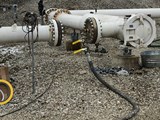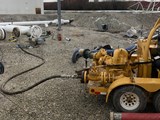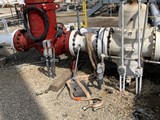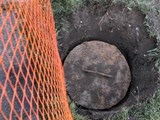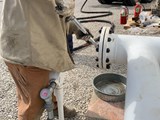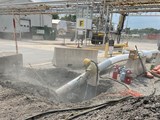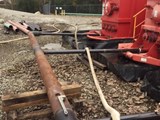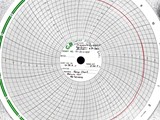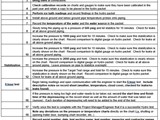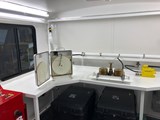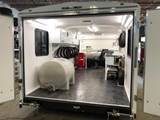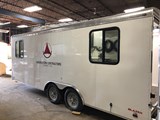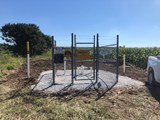35 Mile Hydrostatic Test
Importance of hydrostatic testing
Hydrostatic testing is the final step in pipeline construction. The hydrostatic test represents proof that the pipeline will hold its design pressure. These tests are performed at pressures higher than the actual operational pressure. Midwestern Contractors routinely performs this type of testing at the end of construction or, in some cases, to test the integrity of an existing line.
Hydro (water), Static (solid) is a technique that utilizes the incompressibility of water to apply pressure to an entire pipeline system to assure that every component will hold pressure. Water will not store energy like gas. If a catastrophic failure occurs during a hydrostatic test a 50-foot safety zone is enough to assure that no one will be injured. When a rupture occurs the water immediately depressurizes without a massive release of energy. To achieve a successful hydrostatic test every detail of preparation must be attended to, and the execution must be carefully orchestrated.
A typical hydrostatic test will be conducted at 1.5 x MAOP (Maximum Allowable Operating Pressure), with a duration 4 to 8 hours. Pressures could be anywhere between 300 and 3,500 psi. In a few cases they could be higher. Most pipelines are tested after they are in the ground and backfilled. The ground cover acts as a buffer against temperature changes and as a safety blanket in the event of a failure. The quality of domestic pipe, fittings and valves, coupled with today's welding technology has virtually eliminated hydrostatic test failures.
Case study
In the case of our Northern Illinois, 14", 35-mile pipe, hydrostatic test, the preparation was rather extensive and involved the excavation of 3 block valves, excavation of 2 stopple sleeves, installation of 4 temperature probes, and hard piping to the Frac tanks. At the conclusion of the tests all disturbed areas were restored, all construction fencing removed and permanent fencing installed.
These preparations allow observations to be made at the points where leaks typically occur. The hard piping is necessary because hydro-test water is usually sourced from Municipal water systems, and it is disposed of in Municipal sewer systems. Once the water is in the pipe it is consider contaminated and usually cannot be discharged onto the surface. It must be contained and returned to a sanitary system or process sewer.
This test was conducted on a line that operates at 1,153 psig (pounds per square inch at gauge). The test had a duration of 8 hours with an allowable pressure variation between 1,501 psig. and 1,455 psig.
Once preparations are complete the pipeline must be brought up to pressure in phases. Each increase in pressure gives observers a chance to inspect valves, blind flanges, and other connections, for leaks. If any are found the pressure is brought to zero and repairs are made. Incremental pressure changes also give the water temperature a chance to stabilize.
In our case study, this pipeline was buried underground. For tests that are conducted on pipelines where large portions are above ground, atmospheric temperatures can have a direct effect on the water temperature inside the pipe. Bright sun or sudden cloud cover and raise or drop the temperature out of the tolerance zone and cause the test to fail.
The instruments recording the test consist of chart recorders and dead weights. These must be calibrated and certified before any test is conducted. This assures an accurate record of the test. These documents must be preserved.
Hydrostatic testing is also mandated by the Department of Transportation (DOT) as part of the certification process to show that a pipeline can maintain safe operating pressures. The DOT’s rules mandate hydrostatic tests at preset intervals to prevent catastrophic failure.
The valves and fittings used to pipe the high-pressure waterlines to the pipeline can also be a failure point. These valves are typically a 6000 lbs. class valves, however, repeated use in successive tests can stress any component to a point where it needs to be replaced.
Results
This test was successful, and we like all of our tests to be routine. The only way that can happen is through preparation, quality control, and experience, preparing for and conducting hydrostatic tests.
At Midwestern Contractors our 70-year history with pipelines, stations and hydrostatic testing gives our customers assurance that their hydrotest will be conducted properly with a very high probability of a successful outcome.

